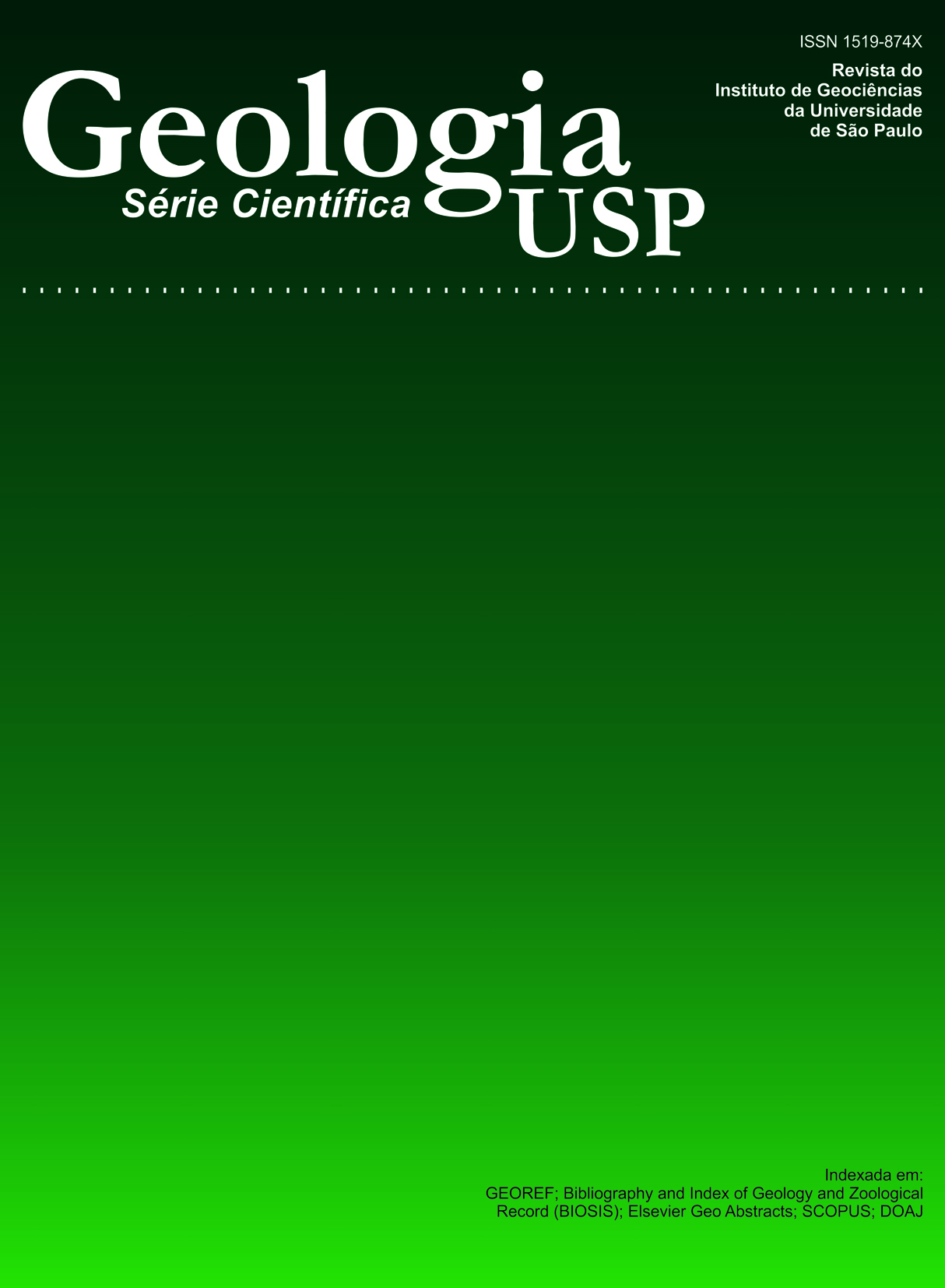O Grupo Canastra em sua área-tipo, região de Tapira, sudoeste do estado de Minas Gerais
DOI:
https://doi.org/10.5327/Z1519-874X2012000200006Palavras-chave:
Grupo Araxá, Grupo Bambuí, Faixa Brasília, Escamas tectônicasResumo
Este trabalho teve como objetivo apresentar os resultados do mapeamento geológico realizado na região de Tapira, parte Sul da Faixa Brasília. Esta região, que é a área-tipo do Grupo Canastra, mostrou grandes complexidades tectônica e estratigráfica ao contrário da simplicidade sugerida em trabalhos prévios. A partir do reconhecimento das principais descontinuidades tectônicas, foi possível subdividir a área em domínios. No oeste elas foram individualizadas em escama I, marcada por rochas pelíticas e pelítico-grafitosas com intercalações psamíticas, e II, com rochas pelíticas com intercalações psamíticas e de rochas máficas e ultramáficas, sobrepostas por gnaisses. No domínio leste, foi definido um conjunto de três escamas tectônicas, no qual, nas duas inferiores, predominam rochas pelíticas e pelítico-grafitosas com intercalações de rochas psamíticas; diferindo-se nas condições metamórficas, a inferior é marcada por associações mineralógicas contendo muscovita + clorita + quartzo ± grafita ± albita, sem biotita e a superior com muscovita + quartzo + granada ± clorita ± biotita ± cloritoide ± grafita ± albita. Na escama superior ocorrem rochas pelíticas com contribuições localizadas de rochas psamíticas e ultramáficas. No domínio sul, ocorre basicamente rochas psamíticas, com contribuições de rochas pelíticas e rudáceas, na quais é comum a preservação de texturas e estruturas sedimentares. As rochas dos vários domínios são interpretadas como parte de uma bacia de margem continental passiva, situada na margem ocidental do paleocontinente São Francisco. Neste contexto, as rochas do domínio sul representariam a fácies de plataforma proximal; as rochas das escamas inferior e intermediária (domínio leste) e da escama I (domínio oeste) são de fácies de plataforma distal; e aquelas da escama superior (domínio leste) e da II (domínio oeste) são reconhecidas como depositadas em um ambiente de talude continental e/ou fundo oceânico.Downloads
Os dados de download ainda não estão disponíveis.
Publicado
2012-08-01
Edição
Seção
Artigos
Licença
Autores que publicam nesta revista concordam com os seguintes termos:
- Autores mantém os direitos autorais e concedem à revista Geologia USP. Série Científica, o direito de primeira publicação, com o trabalho sob a licença Creative Commons BY-NC-SA (resumo da Licença: https://creativecommons.org/licenses/by-nc-sa/4.0 | texto completo da licença: https://creativecommons.org/licenses/by-nc-sa/4.0/legalcode) que permite o compartilhamento do trabalho de forma não comercial e conferindo os devidos créditos autorais da primeira publicação nesta revista.
- Autores têm autorização para assumir contratos adicionais separadamente, para distribuição não-exclusiva da versão do trabalho publicada nesta revista (publicar em repositório institucional ou como capítulo de livro), conferindo os devidos créditos autorais da primeira publicação nesta revista.
- Autores têm permissão e são estimulados a publicar e distribuir seu trabalho online (em repositórios institucionais ou na sua página pessoal) a qualquer ponto antes ou durante o processo editorial, uma vez que isso pode gerar alterações produtivas, bem como aumentar o impacto e a citação do trabalho publicado (Veja O efeito do Acesso Aberto e downloads no impacto das citações).
Como Citar
Silva, C. H. da, Simões, L. S. A., Damázio, W. L., Ferreira, S. N., & Luvizotto, G. L. (2012). O Grupo Canastra em sua área-tipo, região de Tapira, sudoeste do estado de Minas Gerais . Geologia USP. Série Científica, 12(2), 83-98. https://doi.org/10.5327/Z1519-874X2012000200006















